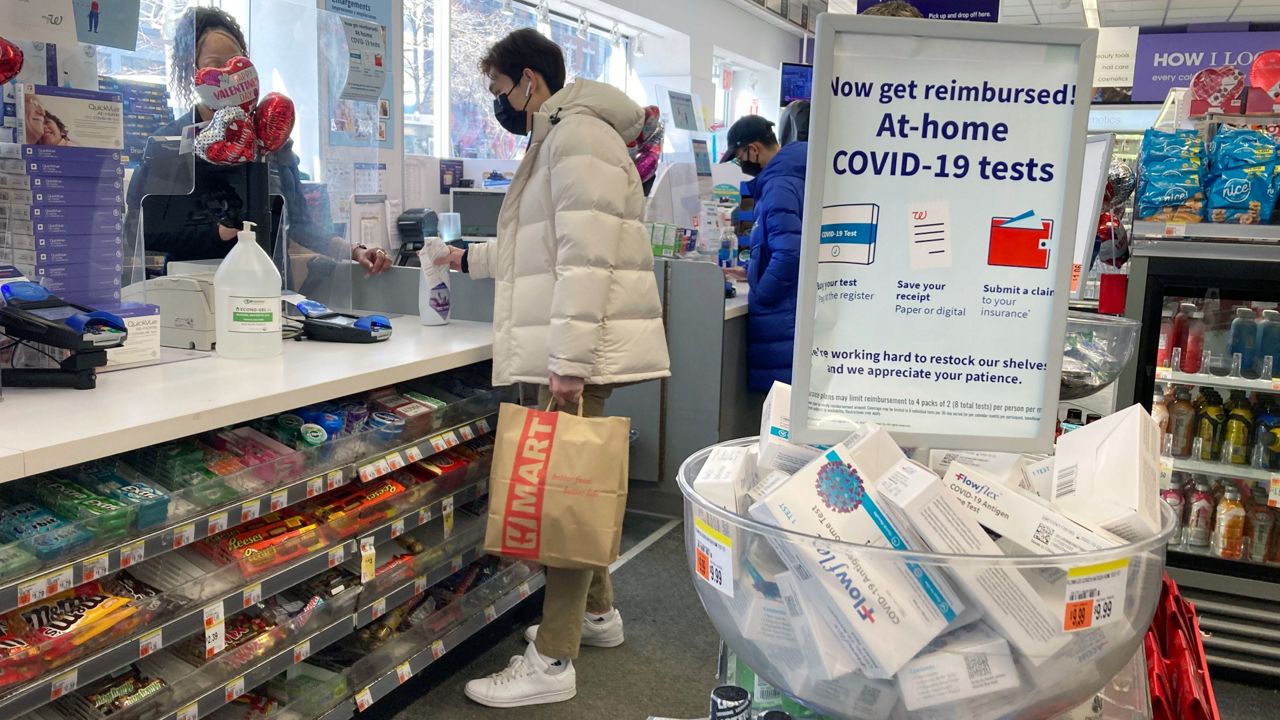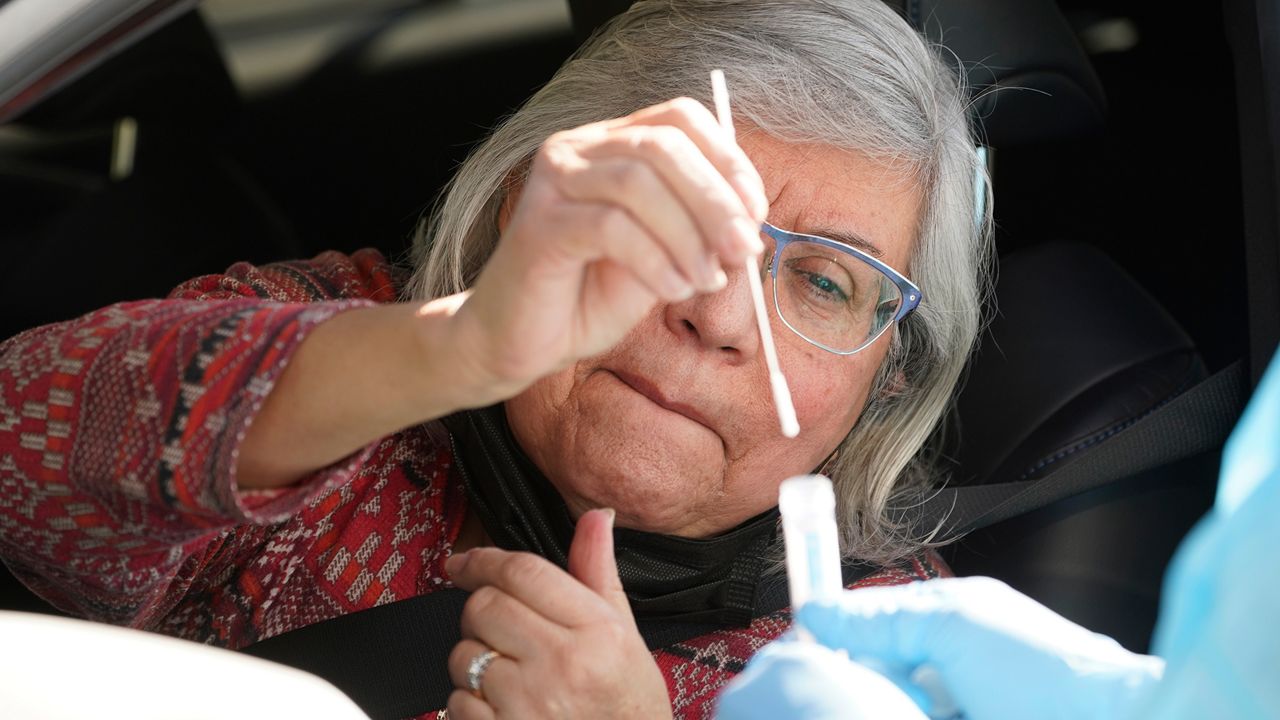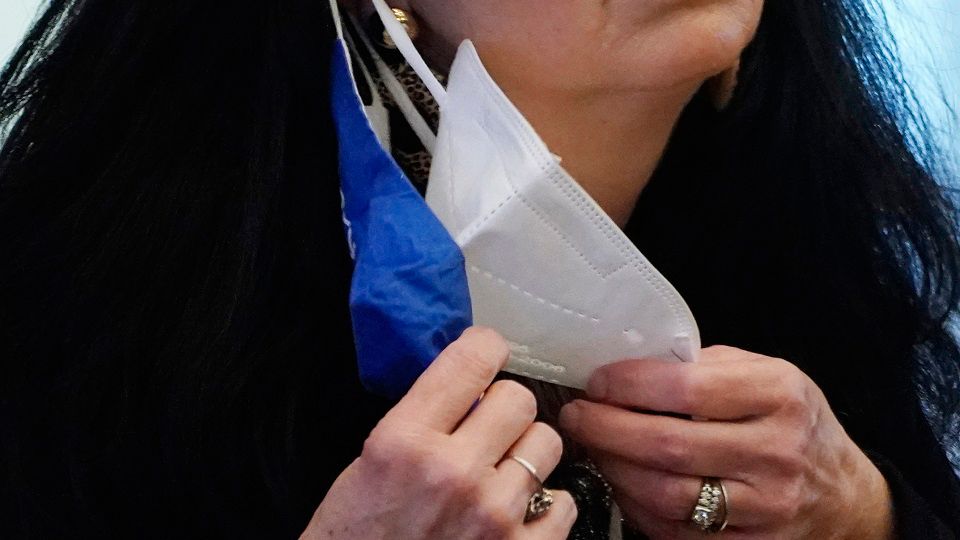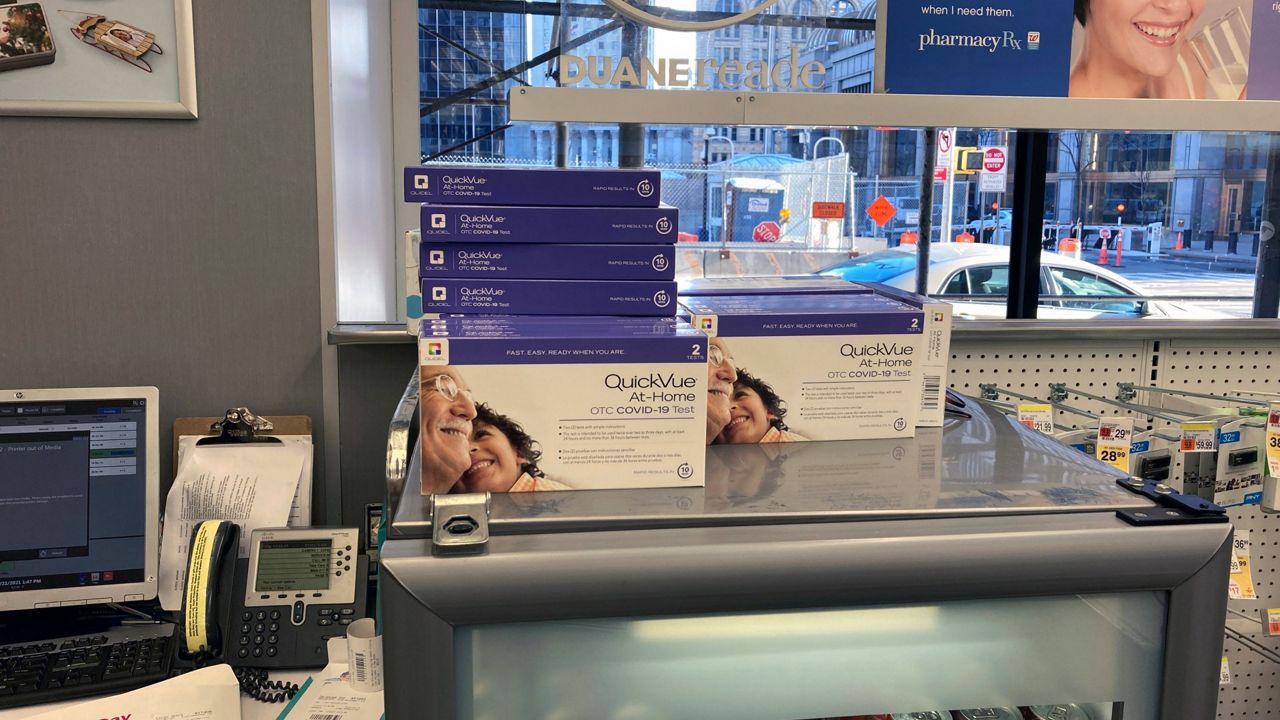NEW YORK — New York City should prepare for the possibility of another COVID-19 wave by scheduling vaccine appointments for unboosted residents and providing all New Yorkers with “COVID safety bags,” among other precautions, Manhattan Borough President Mark Levine said Wednesday.
During a virtual news briefing Wednesday morning, Levine and epidemiologist Dr. Jay Varma, who is part of the borough president’s COVID-19 recovery task force, laid out a five-point “Stay Healthy to Stay Open” plan they hope the city will adopt to mitigate future outbreaks.
What You Need To Know
- Manhattan Borough President Mark Levine on Wednesday laid out a five-point plan he hopes the city will adopt to mitigate future COVID-19 outbreaks
- The plan includes scheduling vaccine appointments for unboosted residents and providing all New Yorkers with "COVID safety bags" filled with masks, thermometers and other supplies
- Asia and Europe have both experienced COVID-19 surges in recent weeks, with the latter’s spike due in part to the spread of an omicron subvariant known as BA.2
While the five boroughs have “come so far” in their fight against the virus, Levine and other city officials are “keeping an eye on what’s happening in Europe,” he said.
Asia and Europe have both experienced COVID-19 surges in recent weeks, with the latter’s spike due in part to the spread of an omicron subvariant known as BA.2.
“We’re seeing, unfortunately, a new wave in Europe, in many countries, including the U.K.,” Levine said. “What’s happening in the U.K. is particularly important for us, because really, Britain has been our pandemic twin throughout the past two years.”
The lifting of COVID-19 restrictions in countries across Europe has also contributed to a rise in cases there. New York City, for its part, recently eliminated its “Key to NYC” rules requiring restaurants, gyms and entertainment venues to ask patrons and customers for proof of vaccination. The city also did away with its indoor mask mandate for most public school students.
“Generally, waves that have hit the U.K., and London, specifically, have hit us as well just a few weeks later,” Levine said. “And so we need to be prepared for the possibility, and I think I would say the likelihood, that that’s going to happen again — that the wave that’s now hitting the U.K. and Europe could and likely will hit New York City.”
As part of Levine’s plan, the city would launch a campaign encouraging New Yorkers to get their booster shots. City employees would schedule vaccine appointments for unboosted residents at “convenient” locations — then send them text, emails and postcards with their appointment information, he explained.
As of Wednesday morning, only 36% of New York City residents had received booster shots, city data shows.
“If we can make it easy by giving them an appointment, taking care of that step for them, we believe that they will show up and get their shot, and that will save lives here,” Levine said. “But we’re also prepared to go further, and we’re suggesting door-to-door outreach for people who don’t come to their appointment.”
With the city on track to end its contact-tracing program in April, contact tracers could transition into outreach roles, he proposed.
High-quality masks, meanwhile, should be readily available to New Yorkers, the borough president said, suggesting that the city supply small businesses and local nonprofits with free masks to hand out to residents.
“We want to upgrade our mask game, and we want to make it easy for the public to do that,” Levine said.
Much like the hand towels, hand soap and toilet paper found in bathrooms, masks should be “available everywhere,” Varma maintained.
To that end, the city should begin distributing “COVID safety bags” to New Yorkers, complete with high-quality masks, thermometers, rapid test kits and hand sanitizer, Levine said. Bags would come equipped with pulse oximeters for use by high-risk residents, in addition to multilingual pamphlets containing COVID-19 resources.
“Of course, it’s a big city, and we probably couldn’t get them out to everybody immediately, so we do want to prioritize those communities which are highest risk,” he said. “But ultimately, we want everybody to have this kind of resource.”
The plan would also see the city work to improve its COVID-19 data collection methods and expand its focus on equity in combating the virus, he said.
The city, Levine maintained, can “take actions now, sensible actions, that will make it much less likely that any future wave disrupts our life.”
“We don’t want a repeat of what happened in omicron, where really, it led to, in essence, a partial shutdown of the economy, not because government shut anything down, but because the risk was real, and people themselves generally started to hunker down,” he said.
The borough president had yet to speak with Mayor Eric Adams about his proposals as of Wednesday morning, he noted.
“I’ve not spoken to the mayor, but I’ve spoken to our friends in the health department about this, and we will continue to partner with them, and I’m excited to continue that dialogue,” Levine said. “Very optimistic that the city will do the right thing here.”
In a statement provided to NY1, New York City Department of Health & Mental Hygiene Press Secretary Patrick Gallahue said the agency "continues to monitor COVID cases and trends to assess the risk to New Yorkers."
"We welcome the suggestions from our partners and look forward to reviewing them," Gallahue said. "Our surveillance systems are constantly evolving and as we analyze the efficacy of different systems, we'll work to integrate them into what is presented to the public, so New Yorkers have reliable data to act on."
"Data on race and poverty, as well as other characteristics, are considered in our data, and we especially appreciate their prioritization," he added. "Equity has been, and must continue to be, at the center of the recovery."








